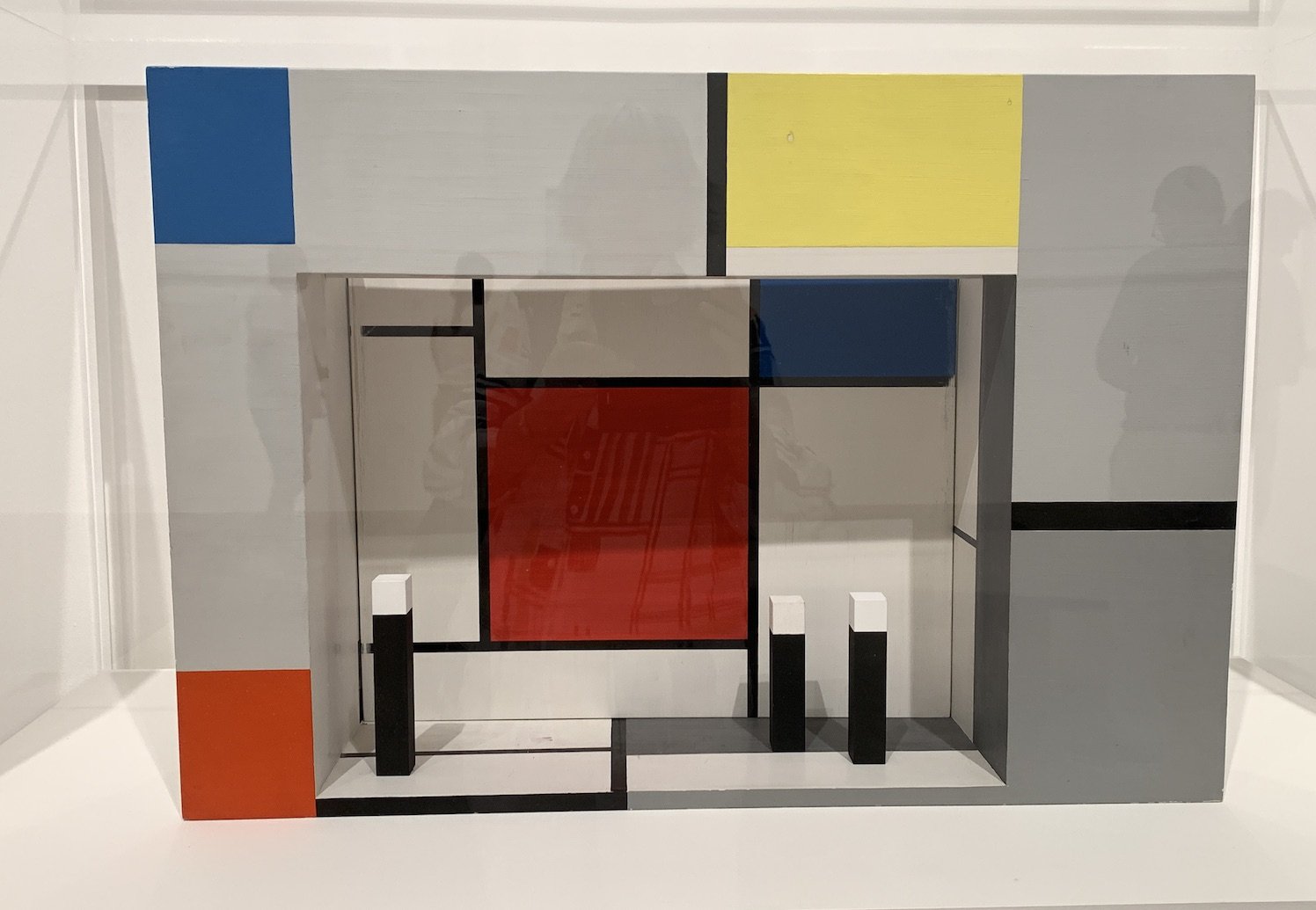Art, Space & Time
Piet Mondrian’s exploration of space and neo-plasticism as a stage set model, Tate Modern.
How does an artist create their own definitive style? It’s a question many people have asked me and I think of pivotal artworks which intersect an artist’s body of work over time and how they came to make the works which define them.
Art is never created in a vacuum. It is influenced by society, time, place and the circumstances of an artist’s life. How each artist expresses these, '‘flavours’ their work. Often the most notable artists are the ones who step outside the conventions of the time and start experimenting - with subjects, materials or methods of creating.
The exhibition Forms of Life, at the Tate Modern in London, brings together the works of two artists who were practising at the same time, in different places but who were both influenced by the same ideas and social thinking of the time.
Dutch artist Piet Mondrian (1872-1944) and Swedish artist Hilma af Klint (1862-1944) were formerly trained in the art of landscape painting. Both artists began their careers exploring nature, both experimented with abstracting forms to better express their ideas. While they never met, each artist was influenced by the spiritual thinkers of the early 1900s through the Theosophical and Anthroposophical movements and by the emergence of new scientific technologies.
You can trace these experiments with abstraction through Mondrian’s series of paintings of an apple tree. Each iteration became a little more abstracted. Leaves became a series of lines, the lines gave way to horizontal and vertical ‘strokes’ which then became irregular grid patterns of ‘pure relationships’. These then became the essence of his work through which he experimented with a new visual language. But it didn’t happen overnight….
Klint’s work was largely unknown because very little of it was exhibited during her lifetime. Many artworks had a covenant on them, where could only be exhibited twenty years after her death. Some of the works in this exhibition were of pages from her notebooks. These illustrated the development of her thinking until she came at last to paint her series of The Paintings for The Temple which she envisaged would be hung in a specially designed exhibition space.
Klint said that her spiritual guides commissioned her to create these paintings, which were an exploration of the stages of life from birth to death. She made detailed plans on how these could be exhibited in a spiral shaped temple, where the viewer ascended through life and into higher realms of thinking.
As I walked into the Tate Modern to see this exhibition, I saw a replica of the Aboriginal Tent embassy, erected on the first floor of the gallery. This artwork Embassy was created by artist/activist Richard Bell which contains film screenings of the original 1970s protests in Canberra when the tent embassy was first erected. This artwork has travelled the world and is now combined with Bell’s neon Pay the Rent digital artwork. Amazing to see this declaration of Aboriginal sovereignty as an artwork in London.
While these exhibitions seem to be light worlds apart in time and space, I was struck by the way in which art is all about posing the hard questions: - Who am I? What is my place in the world? How can I reflect what I feel and think so that I can visually express it? How can I share my view of the world in all its forms; beauty, hardship, hope, despair, diversity? Art challenges the viewer to step into a different realm of thinking, if only for a moment.
As Hilma af Klint wrote in 1917:
“My mission, if it succeeds, is of great significance to humankind. For I am able to describe the path of the soul from the beginning of the spectacle of life to its end”.
~Forms of Life exhibition catalogue, Tate Modern
Hilma af Klint from the Forms of Life exhibition
Richard Bell, Embassy Tate Modern






